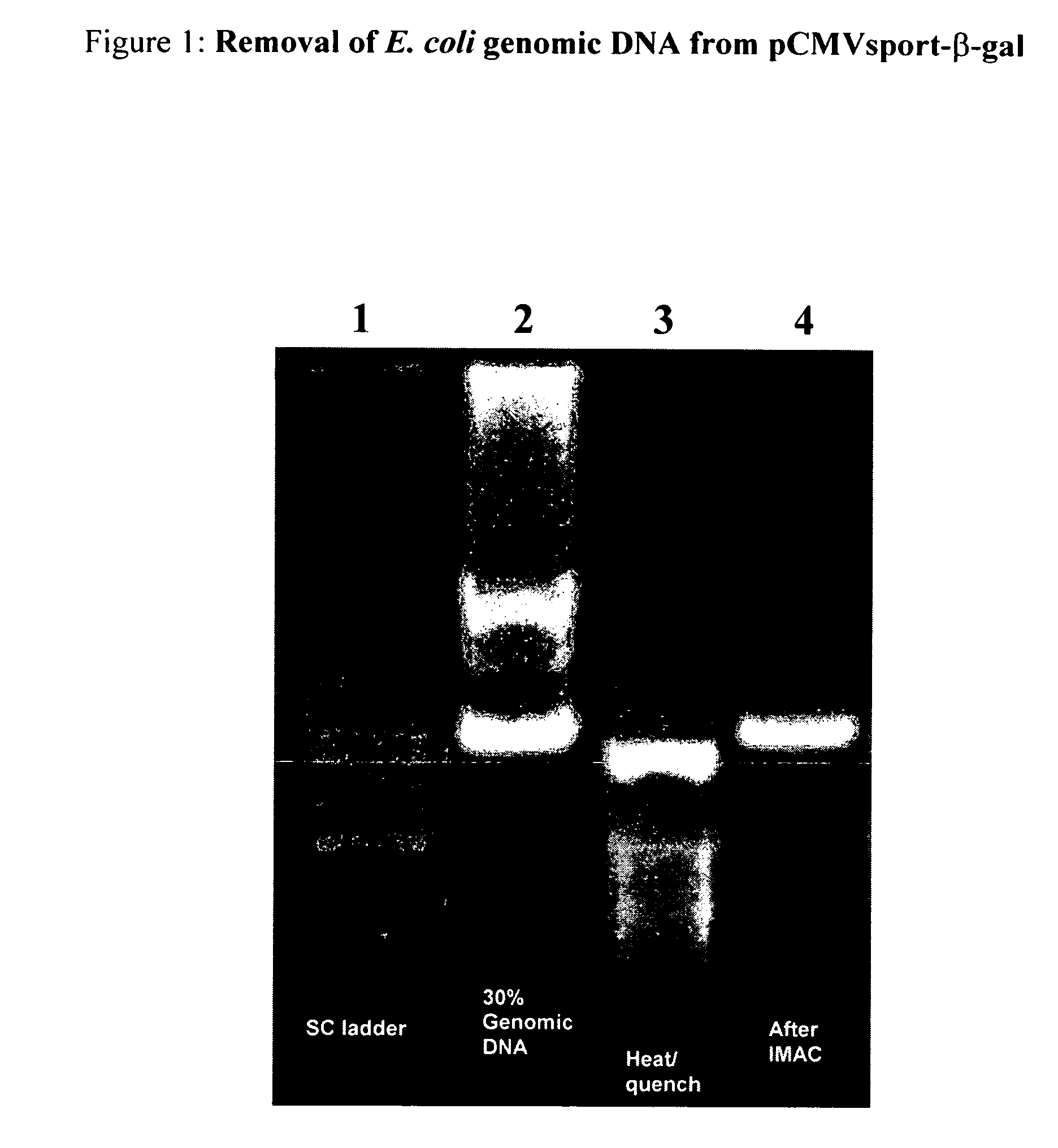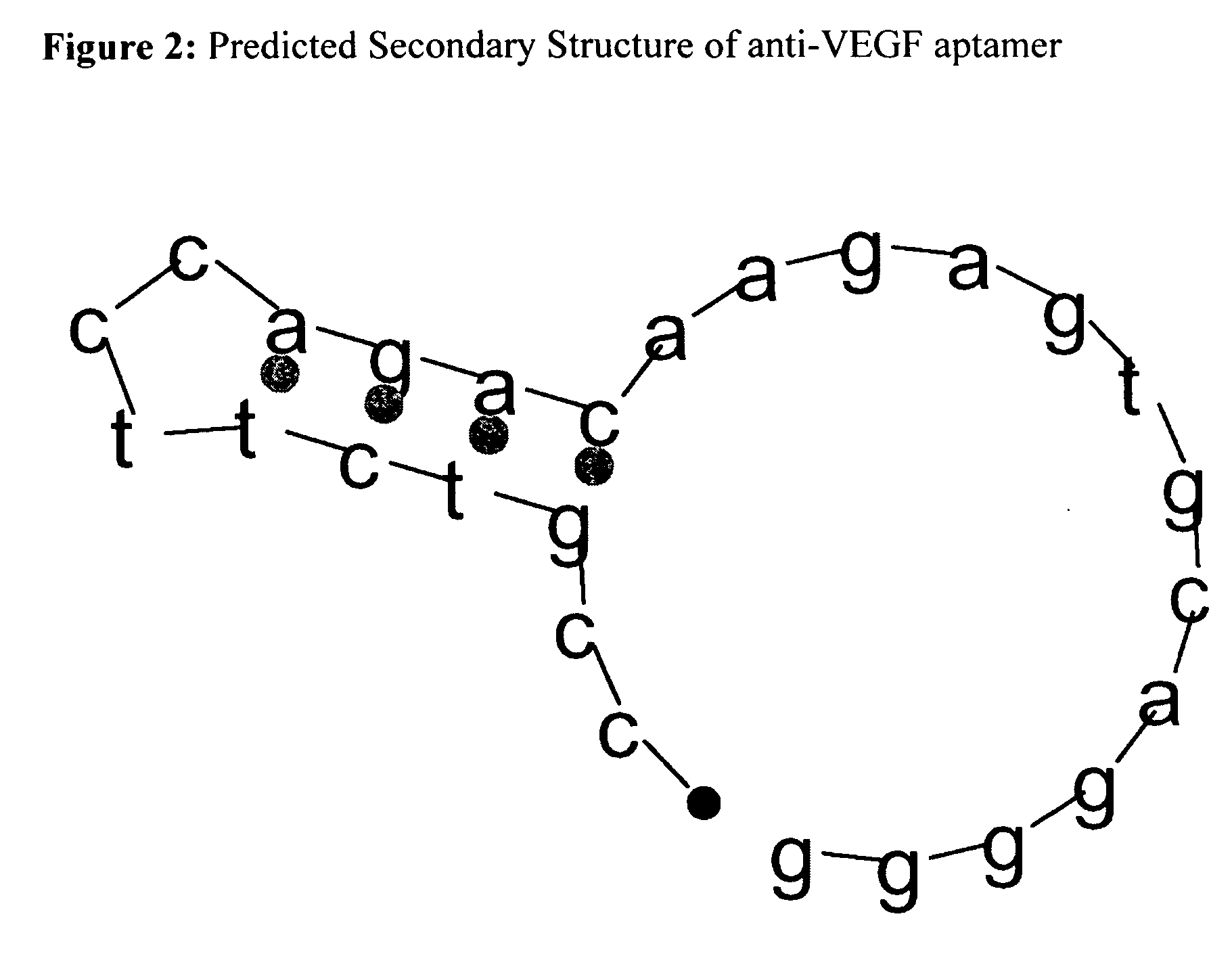Introduction of structural affinity handles as a tool in selective nucleic acid separations
a technology of structural affinity and nucleic acid separation, which is applied in the field of biochemical separation, can solve the problems of lack of selectivity or large capacity production of current methods for separating nucleic acids, and achieve the effects of high effective capacity for the desired product, efficient capture of nucleic acids, and removal of contaminants
- Summary
- Abstract
- Description
- Claims
- Application Information
AI Technical Summary
Benefits of technology
Problems solved by technology
Method used
Image
Examples
example 1
Selective Thermal Denaturation and Renaturation with Capture of Genomic DNA to Yield Plasmid DNA
[0053] In this example, plasmid DNA was prepared as follows: E. coli JM109 harboring the plasmid pCMVsport β-gal (7.9 kb, Gibco BRL) was cultured on LB medium containing kanamycin (50 μg / ml). Shake flasks (4 L, containing 1 L LB) were incubated with shaking at 37° C. overnight, and cell mass was harvested by centrifugation at 1000×g for 30 min and frozen at −80° C. Frozen cells (10 grams) were suspended in 100 ml of 25 mM Tris, 10 mM EDTA, pH 8.0. The pellet was vigorously stirred at 4° C. for 30 minutes to ensure complete re-suspension, which is essential for efficient lysis. The plasmid was extracted using alkaline lysis followed by purification using selective spermidine compaction precipitation. Plasmid purity was verified by electrophoresis at 16 V / cm in 1×TAE buffer on a 0.8% agarose gel containing SYBR gold (Molecular Probes). Final plasmid and genomic DNA concentrations were dete...
example 2
Alkaline Denaturation
[0058] A sample (20 μL) containing a mixture of pCMVsport β-gal and E. coli genomic DNA was prepared as described above in Example 1. 1.4 μL of a 1 M NaOH solution was added and thoroughly mixed to bring the sample to a pH of 12.3 (predicted by titration of 20 mM HEPES). The sample was incubated at room temperature for 5 minutes followed by addition of 1.9 μL of 0.5 M HCl, 2 M NaCl solution while mixing to rapidly neutralize the sample. This sample was then added to 12 μL of settled Cu (II)-IDA-agarose slurry and incubated at room temperature on a rotator for one hour. The supernatant was next transferred to an identical fresh tube of Cu (II)-IDA and equilibrated for one hour. This process was repeated twice more. The final supernatant was collected for analysis by electrophoresis. The results obtained were similar to Example 1.
example 3
Purification of an Anti-VEGF Aptamer from Restriction Fragments Using IMAC with Ammonium Chloride Elution
[0059] The sequence of the desired aptamer (5′CCG TCT TCC AGA CAA GAG TGC AGG G 3′) is inserted into a plasmid (or other suitable vector) along with its double stranded partner and expressed in the desired host organism. Following standard DNA purification and endonuclease restriction, the mixture is prepared in 20 mM HEPES buffer with no added NaCl. The mixture is heated for 1 minute at 80° C. followed by rapid addition of one volume of 20 mM HEPES, 500 mM NaCl in order to stabilize the aptamer in its stem-loop form (FIG. 1). The sample is quickly loaded on to a Cu(II) charged IMAC column to bind the single stranded regions of the structured aptamer and its complementary strand. After binding, a gradient of Ammonium Chloride (NH3Cl) or other suitable eluent from 0 to 500 mM is passed through the column in order to selectively separate the vector backbone and the two strands fro...
PUM
| Property | Measurement | Unit |
|---|---|---|
| Temperature | aaaaa | aaaaa |
| Acidity | aaaaa | aaaaa |
| Separation | aaaaa | aaaaa |
Abstract
Description
Claims
Application Information
 Login to View More
Login to View More - R&D
- Intellectual Property
- Life Sciences
- Materials
- Tech Scout
- Unparalleled Data Quality
- Higher Quality Content
- 60% Fewer Hallucinations
Browse by: Latest US Patents, China's latest patents, Technical Efficacy Thesaurus, Application Domain, Technology Topic, Popular Technical Reports.
© 2025 PatSnap. All rights reserved.Legal|Privacy policy|Modern Slavery Act Transparency Statement|Sitemap|About US| Contact US: help@patsnap.com



